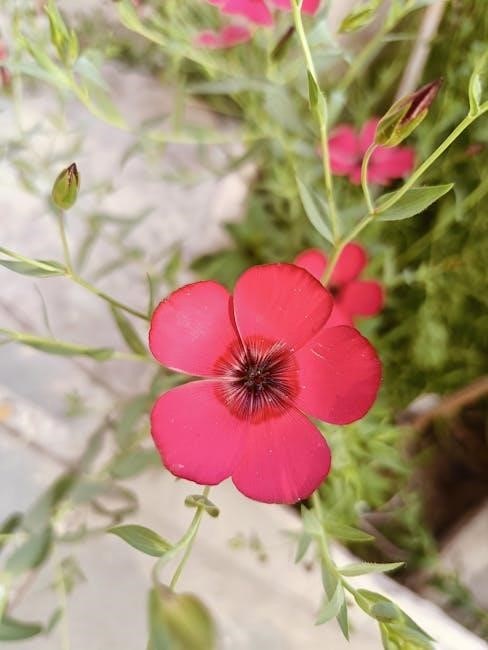epcot drinking around the world guide
Drinking Around the World at Epcot is a beloved adult tradition, combining cultural exploration with unique beverages. It’s a must-try experience for those 21 and older.
History and Cultural Significance
Drinking Around the World traces its roots to Epcot’s debut, where alcohol was first served at Walt Disney World. This tradition reflects cultural exchange and celebration.
2.1. Origins of the Tradition
Drinking Around the World at Epcot traces its origins to the park’s opening, when alcohol was first introduced at Walt Disney World. Initially, Epcot was the only park serving beer, wine, and cocktails, making it a unique destination for adults. The World Showcase, featuring pavilions from 11 countries, offered authentic beverages, sparking the idea of sampling drinks from each nation. Over time, visitors began unofficially challenging themselves to try one drink in every country, creating a cultural and social experience. This tradition, never formally endorsed by Disney, grew in popularity, especially among adults celebrating special occasions like birthdays or bachelor parties. Today, it remains a beloved, albeit unofficial, Epcot activity, blending global flavors with fun and camaraderie.
2.2. Cultural Experience Through Drinks
Drinking Around the World at Epcot is more than just consuming beverages—it’s a cultural journey. Each pavilion offers drinks that reflect the nation’s heritage, from Japan’s sake to Mexico’s margaritas. These beverages are often crafted with traditional ingredients and methods, providing a taste of authenticity. For example, Germany’s Oktoberfest beers and Italy’s limoncello highlight their unique brewing and distilling traditions. Even non-alcoholic options, like China’s iced tea or Morocco’s mint tea, offer cultural insights. This experience allows guests to connect with global customs and flavors, making it a memorable way to explore the World Showcase. By sipping your way through the countries, you gain a deeper appreciation for the diversity of global drinking traditions.
Planning and Preparation
Plan strategically with a budget, drink priorities, and essentials like hydration packs to ensure a smooth and enjoyable experience while exploring the World Showcase.
3.1. Budgeting for the Experience
Plan your Drinking Around the World adventure with a realistic budget. Drinks range from $8 to $15 per country, totaling $100-$130 for the full 11-drink experience. Factor in park tickets, food, and tips for a comprehensive budget. Allocate $80 for a moderate pace with 3-4 drinks. Consider snacks to pair with beverages and stay hydrated to manage alcohol intake effectively. Budgeting ensures a fun and responsible experience without financial strain.
3.2. Creating a Drinking Strategy
A well-planned strategy is essential for a successful Drinking Around the World experience. Decide whether to start in Mexico or Canada, as this sets the tone for your journey. Pace yourself by limiting drinks to one per country and consider alternating with water to stay hydrated. Pairing beverages with snacks can help manage alcohol intake and enhance cultural immersion. Allocate time wisely, aiming to complete the tour before sunset to enjoy the evening atmosphere. Plan breaks to rest or explore attractions, ensuring a balanced and enjoyable experience. A strategic approach allows you to savor each drink while maintaining energy and focus throughout the day.
3.3. Essential Supplies
Preparing the right supplies is crucial for a smooth Drinking Around the World experience. Bring a refillable water bottle to stay hydrated, as the Florida heat and alcohol can dehydrate quickly. Electrolyte packets are highly recommended to maintain energy levels throughout the day. A portable charger ensures your phone stays powered for photos and navigation. Sunscreen, a hat, and sunglasses are must-haves for outdoor exploration. Wear comfortable shoes, as you’ll be walking extensively. Snacks like granola bars or trail mix can help pace your drinking and prevent hunger. A small first-aid kit and pain relievers are also wise additions. Lastly, carry a lightweight bag to hold all essentials without adding bulk. These items will help you enjoy the experience comfortably and responsibly.
The World Showcase Tour
The World Showcase Tour offers a journey through 11 countries, each featuring unique drinks, snacks, and cultural landmarks. Explore iconic spots like Mexico’s pyramids, Germany’s villages, and Japan’s gardens, immersing yourself in global traditions. This tour is perfect for adults seeking a blend of culture and entertainment, making it a highlight of Epcot’s offerings.
4.1. Starting Points and Routes
When embarking on your Drinking Around the World adventure at Epcot, the starting point and route are crucial for a seamless experience. Many guests debate whether to begin in Mexico or Canada, as these are the two most convenient entry points near the park’s entrance. Others prefer starting in France or the United Kingdom for a more relaxed pace. The World Showcase is circular, so you can choose to go clockwise or counter-clockwise, depending on your preference. Starting near the park entrance allows for easy access, while beginning in a less crowded area can help avoid initial lines. Ultimately, the route is flexible, and some guests enjoy starting at their favorite country to maximize enjoyment. Popular starting points include Mexico for its vibrant atmosphere or Canada for a more laid-back vibe. The key is to plan your route based on your group’s preferences and pacing goals.
4;2. Navigating the 11 Countries
Navigating the 11 countries during your Drinking Around the World adventure at Epcot requires strategy and planning. The World Showcase is arranged in a circular layout, making it easy to traverse. Many guests choose to start in Mexico or Canada, as these are convenient entry points near the park entrance. From there, you can move clockwise or counter-clockwise, visiting each pavilion in sequence. Popular stops include Mexico for margaritas, Norway for aquavit, and Japan for sake. Budget at least 3-4 hours to complete the tour at a leisurely pace. Pro tip: Alternate alcoholic drinks with water and snacks to stay hydrated and manage your intake. With 11 countries to explore, the journey is as much about the experience as it is about the drinks. Plan wisely and enjoy the cultural and culinary highlights of each nation!
Drink Options by Country
Explore 11 countries offering unique drinks, from Mexico’s margaritas to Japan’s sake. Each pavilion provides authentic beverages, making your journey a cultural tasting adventure around the globe.
5.1. Mexico
Mexico offers a vibrant selection of drinks that reflect its rich cultural heritage. The Avocado Margarita is a must-try, blending creamy avocado with tequila for a unique twist. For beer enthusiasts, options like Cerveza Negra or Modelo Especial provide a refreshing taste. Don’t miss the Horchata, a sweet, milky drink perfect for those seeking non-alcoholic options. These beverages can be found at La Cava de Tequila or outdoor stands near the pavilion; Pair your drink with Mexican cuisine like tacos or guacamole for a complete experience. Pro tip: Start with a lighter drink to pace yourself for the journey ahead!
5.2. Norway
Norway’s beverage offerings are rooted in tradition and natural flavors. The Viking Coffee is a standout, featuring cloudberry wine blended with coffee liqueur for a sweet and bold taste. For beer enthusiasts, options like Ringnes offer a crisp, refreshing experience. Those seeking something unique can try Aquavit, a traditional Scandinavian spirit often enjoyed as a shot. These drinks are available at the Norway Pavilion or nearby kiosks. Pair your drink with Norwegian treats like school bread for a complete experience. The picturesque setting of the pavilion makes it an ideal spot to relax and enjoy your beverage. Pro tip: Don’t rush—savor the flavors and take in the charming atmosphere!
5.3. China
China’s beverage offerings at Epcot blend tradition with modern flavors. The Honey Hibiscus Hard Iced Tea is a popular choice, offering a sweet and refreshing taste with a hint of floral notes. Priced around $12.75, it’s a great option for those seeking a lighter drink. For something more unique, the Tipsy Ducks in Love is a must-try, featuring a blend of bourbon, black tea, and citrus, available for $14.50. Both drinks are served at the Joy of Tea stand. Pair your drink with Chinese snacks like dumplings or egg rolls for a complete experience. The pavilion’s serene gardens provide a relaxing spot to enjoy your beverage. Pro tip: If you prefer less sweetness, opt for the iced tea, but if you’re adventurous, the Tipsy Ducks is a memorable choice!
5.4. Germany
Germany’s beverage offerings at Epcot are a celebration of its rich brewing traditions. The Weihenstephaner Hefe Weissbier, a refreshing wheat beer with hints of banana and clove, is a must-try for beer enthusiasts, priced around $10.50. For a fruity twist, the Schöfferhofer Pink Grapefruit Hefeweizen combines tart grapefruit with sweet wheat beer notes, available for $12.00. Both are perfect for sipping in the pavilion’s charming courtyard. Pair your drink with a pretzel or bratwurst for an authentic experience. The lively atmosphere, complete with live polka music, enhances the festive vibe. Pro tip: If you’re unsure which beer to choose, ask the friendly cast members for recommendations—they’re happy to guide you through Germany’s iconic brews!
5.5. Italy
Italy’s pavilion at Epcot offers a refined drinking experience, showcasing iconic beverages that reflect its rich culinary heritage. The Moretti Beer, priced at $11.25, is a crisp, refreshing lager perfect for warm days. For wine lovers, the Chianti ($12.50) provides a bold, full-bodied option with rich flavors of Tuscan grapes. Those seeking something sweeter can enjoy the Limoncello, a zesty lemon liqueur available for $14.00. Pair your drink with a gelato or bruschetta for a true Italian-inspired moment. The charming piazza-style seating area invites you to linger and soak in the romantic ambiance. Pro tip: Visit in the evening when the pavilion is beautifully lit, making it an ideal spot to relax and sip your drink.
5.6. United States
The United States pavilion at Epcot offers a variety of American craft beers, cocktails, and wines that celebrate the country’s diverse flavors. A popular choice is the Samuel Adams Boston Lager, priced at $10.75, which delivers a smooth, malty taste. For something sweeter, the Frozen Apple Martini ($12.50) is a refreshing and tangy option. Wine enthusiasts can opt for the California Merlot ($11.00), offering rich notes of berries and chocolate. Located in the heart of the World Showcase, the pavilion’s outdoor seating area provides a great spot to enjoy your drink while soaking in the lively atmosphere. Pro tip: Stop by in the evening for a more relaxed experience and pair your drink with classic American snacks like popcorn or pretzels for a nostalgic treat.
5.7; Japan
Japan offers a unique selection of beverages that blend traditional flavors with modern twists. A standout is the Violet Sake ($12.00), a delicate, floral sake that pairs well with sushi. Beer enthusiasts can enjoy the Asahi Super Dry ($10.50), a crisp, refreshing lager. For something sweeter, the Honeydew Melon Smoothie ($11.25) is a refreshing non-alcoholic option. The pavilion also features sake-based cocktails, such as the Sakitini ($14.50), combining sake with citrus notes. Located near the pagoda, the outdoor seating area offers a serene spot to sip your drink while enjoying the beautiful Japanese garden. Pro tip: Arrive early to avoid crowds and take your time savoring these distinctive flavors in a tranquil setting.
5.8. France
France offers a sophisticated selection of beverages that highlight its renowned culinary expertise. The Grey Goose Lemon Slush ($11.00) is a refreshing and tangy favorite, perfect for warm days. Wine enthusiasts can choose from a Bordeaux Red Blend ($12.50) or a glass of Champagne ($16.00). For a unique twist, the Grand Marnier Orange Slush ($11.75) combines citrus and sweetness. Located near the charming French bakery, the outdoor seating area provides a romantic ambiance to enjoy your drink. Pro tip: Pair your beverage with a croissant or baguette for an authentic French experience. Many guests recommend starting their Drinking Around the World journey here due to its central location and delightful options.
5.9. United Kingdom
The United Kingdom pavilion offers a variety of classic British beverages that cater to both beer and cocktail lovers. A popular choice is the Strongbow Cider ($11.25), a crisp and refreshing apple cider. For a lighter option, the Magners Pear Cider ($11.50) provides a sweet and tangy flavor. Beer enthusiasts can enjoy a pint of Harp Lager ($10.75) or Smithwick’s Red Ale ($10.75). Those seeking something stronger might opt for the Bloody Mary ($14.00), made with Bombay Sapphire gin. These drinks can be found at the Rose & Crown Pub or the outdoor bar near the pavilion. The UK pavilion is a fan favorite due to its wide selection and cozy seating areas, making it an excellent stop during your Drinking Around the World journey. Don’t miss the live music and charming British ambiance while sipping your drink.
5.10. Canada
The Canada pavilion offers a selection of beverages that highlight the country’s rich brewing traditions and unique flavors. A must-try is the Moosehead Draft ($10.75), a crisp, refreshing Canadian lager. For a lighter option, the Labatt Blue ($10.75) is a classic choice. Those seeking something sweeter might enjoy the iced cider ($12.00), offering a tart and refreshing taste. Another popular option is the Crown Royal Whisky-based cocktail ($14.50), perfect for spirit enthusiasts. These drinks can be found at the pavilion’s outdoor bar or inside the cozy pub. Canada’s offerings provide a delightful conclusion or starting point for your Drinking Around the World adventure. Pro tip: Visit early or later in the evening to avoid crowds and enjoy your drink with a view of the lagoon.
Non-Alcoholic Beverage Guide
For those choosing not to drink alcohol or seeking refreshing alternatives, Epcot’s World Showcase offers a variety of non-alcoholic beverages. The Honey Hibiscus Hard Iced Tea in China is a sweet, caffeine-free option, while Morocco’s Iced Mint Tea provides a refreshing, herbal choice. Japan’s Violet Sake (non-alcoholic version) and France’s fresh juices are also popular picks. Many pavilions offer flavored sodas, fresh lemonades, and virgin cocktails that capture the essence of their culture. Don’t forget to hydrate with water throughout your journey—hydration is key to enjoying the experience fully. These options allow everyone to partake in the cultural tasting adventure without alcohol, making it inclusive for all ages and preferences. Pairing these drinks with snacks can also enhance your overall experience. Take your time to explore and enjoy the diverse flavors available!
Tips for a Successful Experience
Eating, staying hydrated, and using electrolite packets are crucial. Pace yourself, plan breaks, and consider rides to balance your drinking adventure for a enjoyable experience.
7.1. Eating to Pace Yourself
Eating is essential to pace yourself while drinking around the world at Epcot. Pairing drinks with snacks or meals helps absorb alcohol and maintain energy levels. Opt for light bites like Norway’s school bread or Mexico’s empanadas to keep your stomach satisfied without feeling overly full. Sharing food with your group can also help manage costs and portion sizes. Additionally, consider eating a substantial meal before starting your drinking journey to establish a solid foundation. Snacking throughout the day ensures you can enjoy the experience without rushing or overindulging. Balancing food and drinks is key to making the most of your cultural and culinary adventure around the World Showcase.
7.2. Staying Hydrated
Staying hydrated is crucial while drinking around the world at Epcot, especially given Florida’s heat. Bring a refillable water bottle to ensure you drink plenty of water throughout the day. Consider using electrolyte packets to replenish lost salts and maintain energy levels. Alternate alcoholic beverages with water to pace yourself and avoid dehydration. Many pavilions offer water stations or bottled water for purchase. Don’t rely solely on sugary or caffeinated drinks, as they can exacerbate dehydration. Prioritizing hydration helps you enjoy the experience without feeling fatigued or uncomfortable. A well-hydrated body ensures you can fully embrace the flavors and fun of your global drinking adventure.
7.3. Managing Alcohol Intake
Managing your alcohol intake is essential for a enjoyable and safe Drinking Around the World experience at Epcot. Pace yourself by spacing out drinks and alternating with water or non-alcoholic beverages. Pairing drinks with food helps slow down consumption and prevents over-intoxication. Consider sharing drinks with your group to sample flavors without overdoing it. Be mindful of your limits and avoid rushing through the challenge. Florida’s heat and walking can amplify the effects of alcohol, so listen to your body and take breaks when needed. Prioritizing moderation ensures you can fully enjoy the cultural and culinary aspects of the experience without compromising your well-being or fun.
Challenges and Fun Aspects
Drinking Around the World at Epcot combines cultural exploration with strategic planning. Balancing alcohol intake, managing time, and navigating the park adds excitement and challenge to the experience.
8.1. Time Management
Effective time management is crucial for a successful Drinking Around the World experience at Epcot. With 11 countries to explore, guests must strategically allocate their time to enjoy each drink and soak in the cultural ambiance. A common strategy is to start early, allowing ample time to visit each pavilion without feeling rushed. Plan your route in advance, considering the distance between countries and potential wait times for popular drinks. Budget at least 30 minutes per country to account for lines and leisurely sipping. Don’t forget to factor in meal breaks, as food helps pace your drinking. Groups should coordinate to maintain a steady pace, ensuring everyone stays on track. Proper time management enhances the enjoyment, making the experience memorable and stress-free.
8.2. Photo Opportunities
Drinking Around the World at Epcot offers countless photo opportunities to capture memorable moments. Each pavilion provides unique backdrops, such as iconic landmarks like Mexico’s pyramid or France’s Eiffel Tower. Guests often document their journey by taking pictures with drinks in hand, showcasing the vibrant atmosphere. Sharing these photos on social media adds a fun, competitive element, with many participants creating themed posts. Timing your shots during golden hour or at night, when the park is illuminated, enhances the visual appeal. Don’t forget to include props like sombreros or lederhosen for authentic cultural touches. Group photos in front of each country’s signature landmarks are a must, creating lasting memories of your global adventure.
- Plan stops at visually striking locations for photos.
- Use props to enhance cultural authenticity.
- Coordinate group shots to capture the experience.
Safety and Park Rules
Safety and adhering to park rules are crucial when participating in Drinking Around the World at Epcot. Always drink responsibly and be mindful of your alcohol intake, as overconsumption can lead to health risks. Stay hydrated by drinking water throughout the day and pace yourself between drinks. Disney World has strict rules regarding alcohol consumption, and guests must be 21 or older to purchase or consume alcoholic beverages. Outside alcohol is prohibited, and security may confiscate it. Plan for transportation in advance, as driving under the influence is illegal and dangerous. Respect park rules, such as no drinking in unauthorized areas or after park closing. Additionally, be courteous to other guests and avoid disruptive behavior. Remember, safety and enjoyment go hand in hand during your Drinking Around the World experience.
Drinking Around the World at Epcot is an unforgettable experience that combines cultural exploration, delicious beverages, and timeless Disney magic. Whether you’re celebrating a special occasion or simply seeking adventure, this tradition offers a unique way to connect with global flavors and create lasting memories. Remember to prioritize safety, hydration, and responsible drinking to fully enjoy the journey. With careful planning and a festive spirit, you’ll embark on a memorable adventure through the World Showcase. Cheers to the magic of Epcot and the joy of discovering new drinks and cultures in one iconic setting!

























































